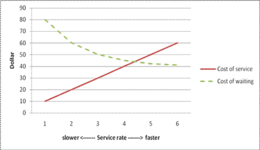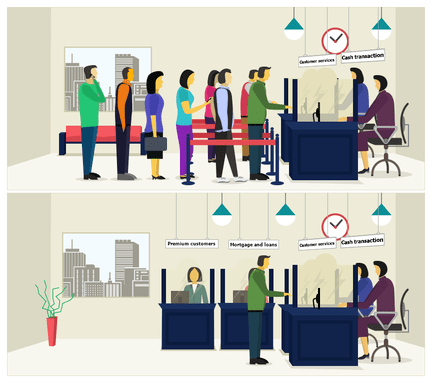Balancing customer wait times vs. cost of faster service
Published on September 1st, 2020

Published on September 1st, 2020

Having lots of customers arriving in droves is a good thing for your business. But making them wait is not. So a restaurant may need more tables and stewards, a retail store may add checkout counters, and a bank may add more tellers.

Customer experience officers (CXOs) will want you to add more resources to reduce wait times, but it has to be balanced by the CFO and top leadership who would be concerned about the increasing cost of providing faster service.
Chart data: fgcu.edu
In fact, you can bring it down to an exact desired business result by adding up this cost, so you know how many tellers or checkout counters is right, and adding more would be cost-ineffective, while any less than that would mean longer queues and wait times for customers.
The total cost of a waiting line is the cost of customers waiting plus the cost of staff required for providing the service. If you add more staff to a service, the cost of providing it increases, but the cost to the business of a customer waiting will decrease.
Total cost = Cw × L + Cs × S
where:
Cw : Cost of customer waiting in queue
L : Average number of customers or units waiting in queue
Cs : Cost of the service (eg: per hour wage of the staff required)
S : Number of service providers (staff assigned to task)
Instead of calculating the monthly fixed cost of enhanced service, there’s a better way to do this - using a queue management system that helps staff resources allocated to a service dynamically, as needed by the business.
Increase tellers or services lines dynamically rather than adding them ahead and then blocking the resource when the usage is low.
One of the features of VirtuaQ is that it is a dynamic queue management system with a robust reporting module. You can set service level alerts (SLAs) at any point in the customer journey. So, for example, the bank manager would get an alert if the average wait time for a service hits a threshold of five minutes, and could then activate another teller for that specific service.
Our reports will give you the data and reports that can help you identify the thresholds discussed above - when to add more resources to reduce queues and wait times, and which service / branch requires this response at what time of the day.